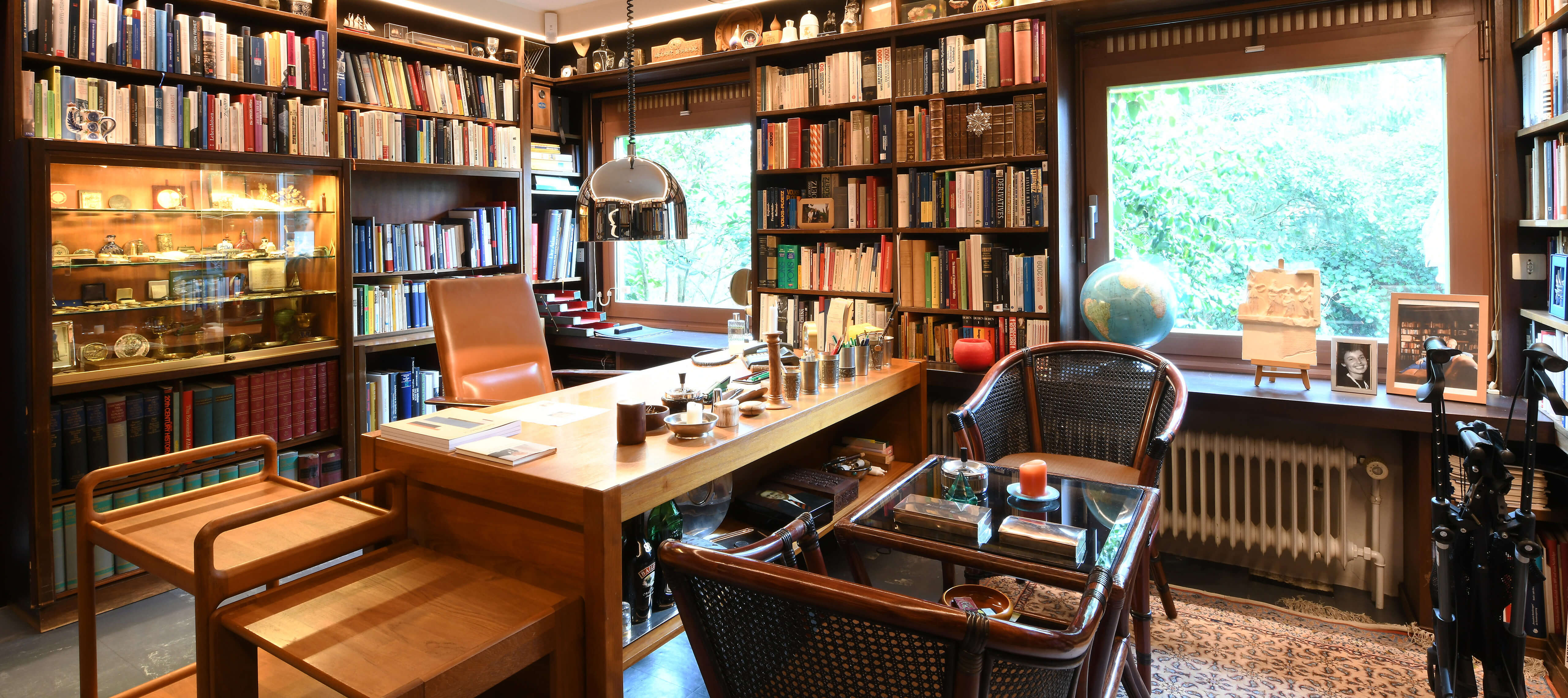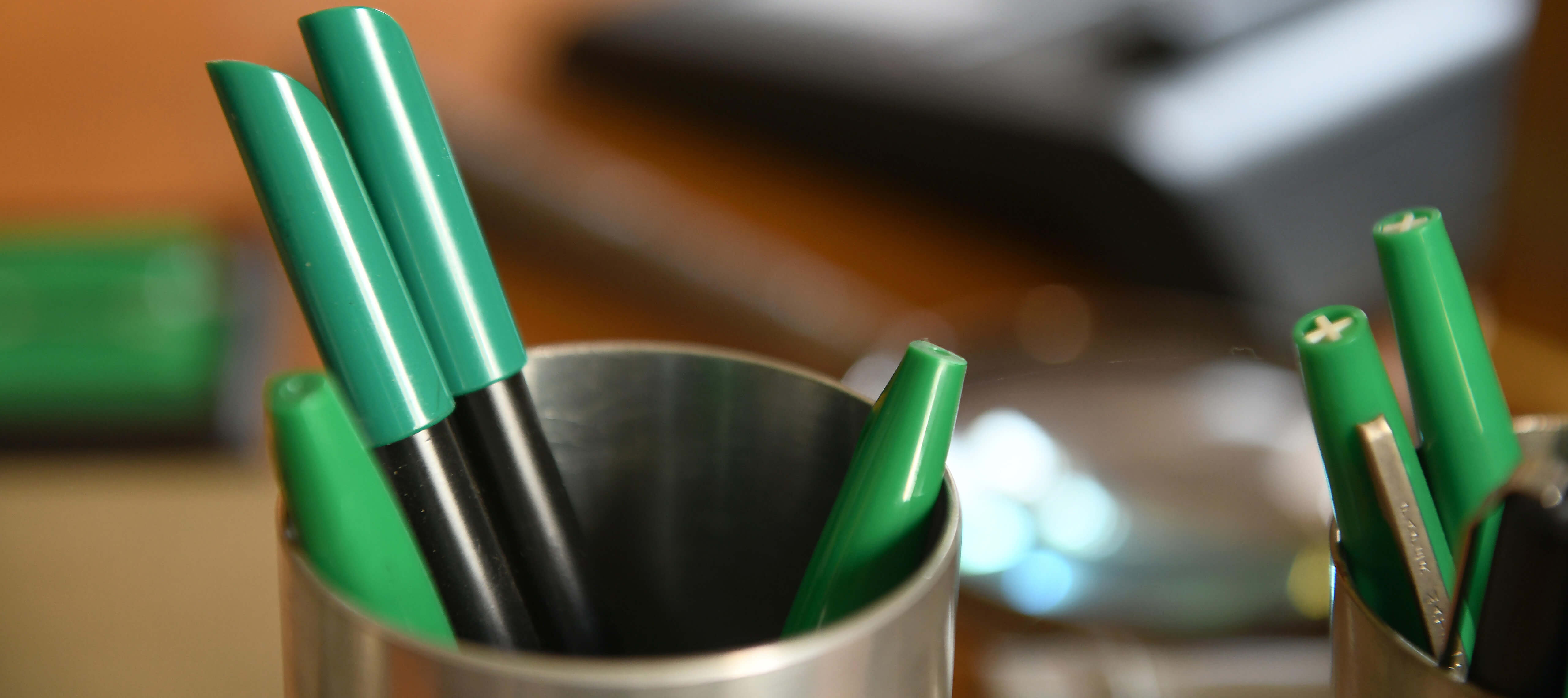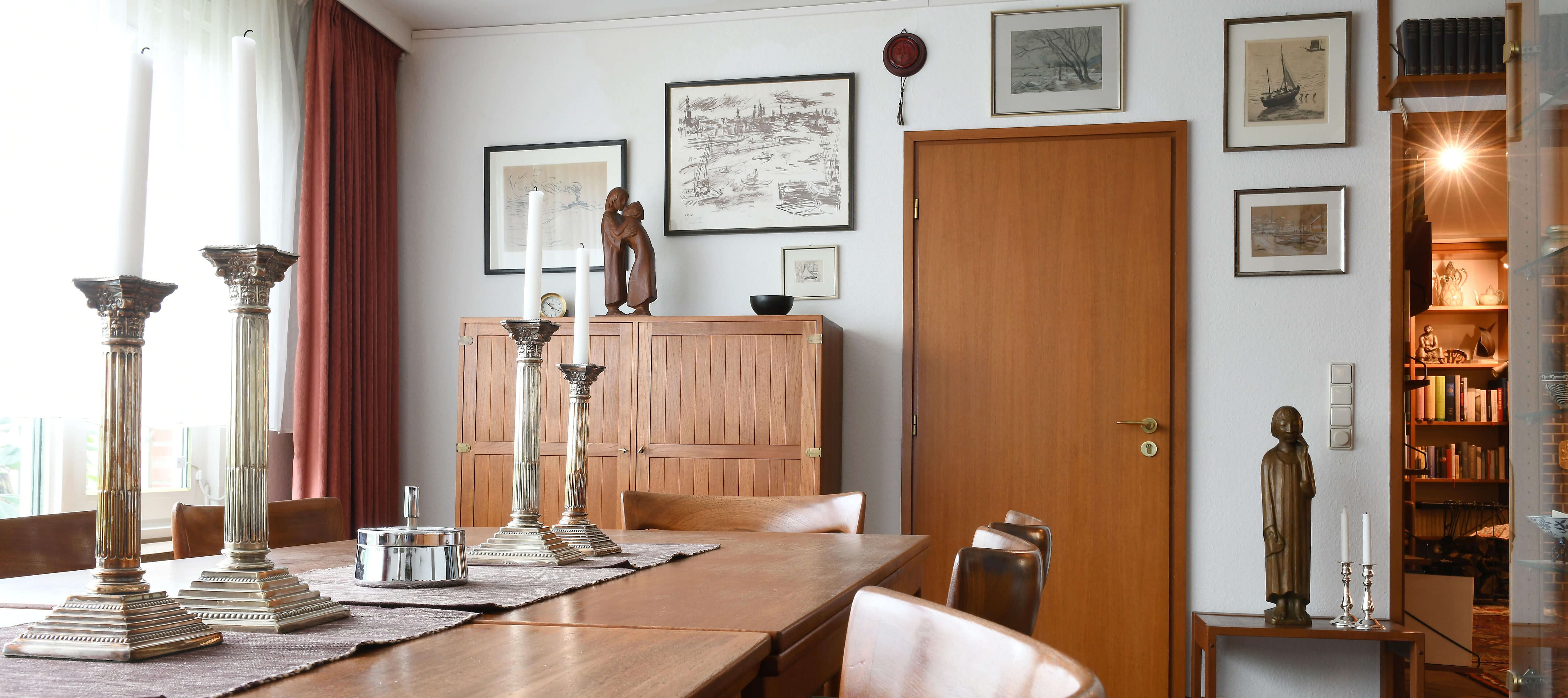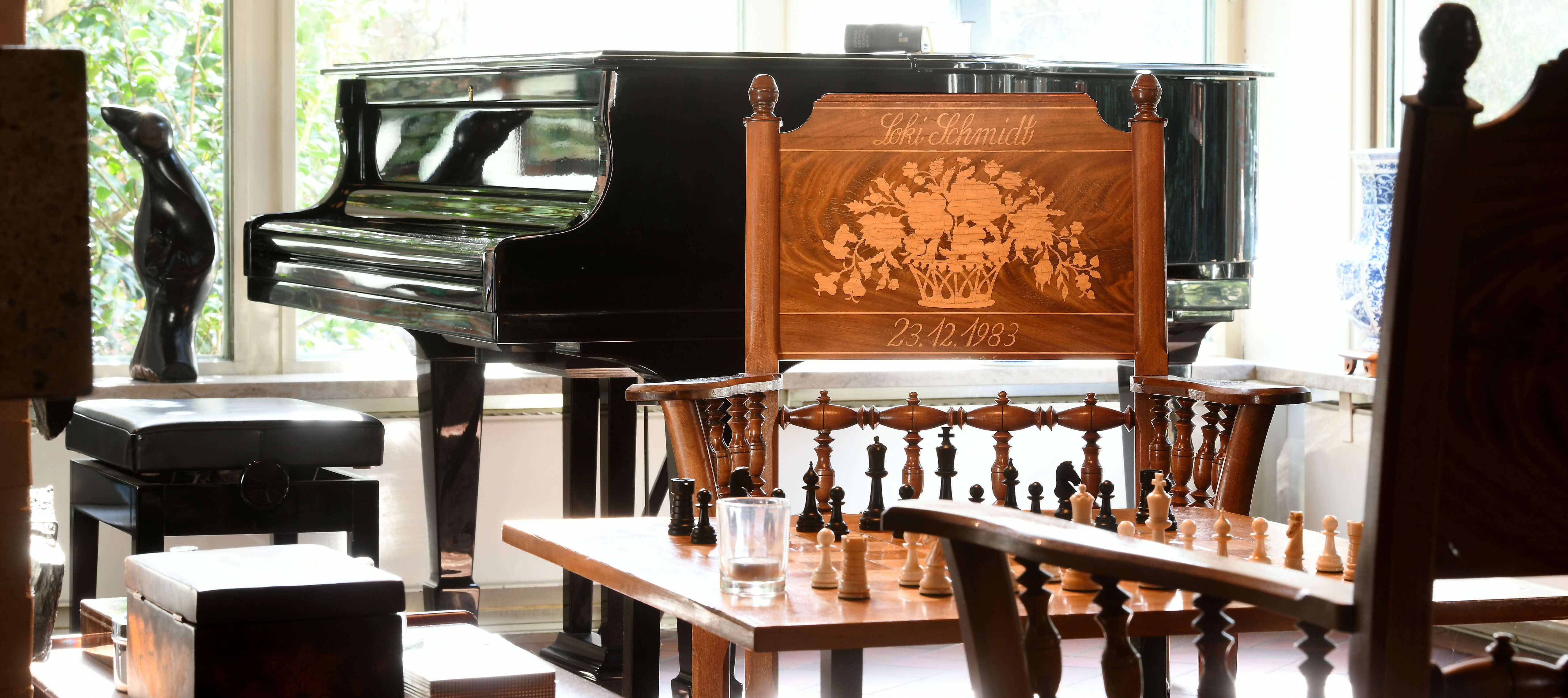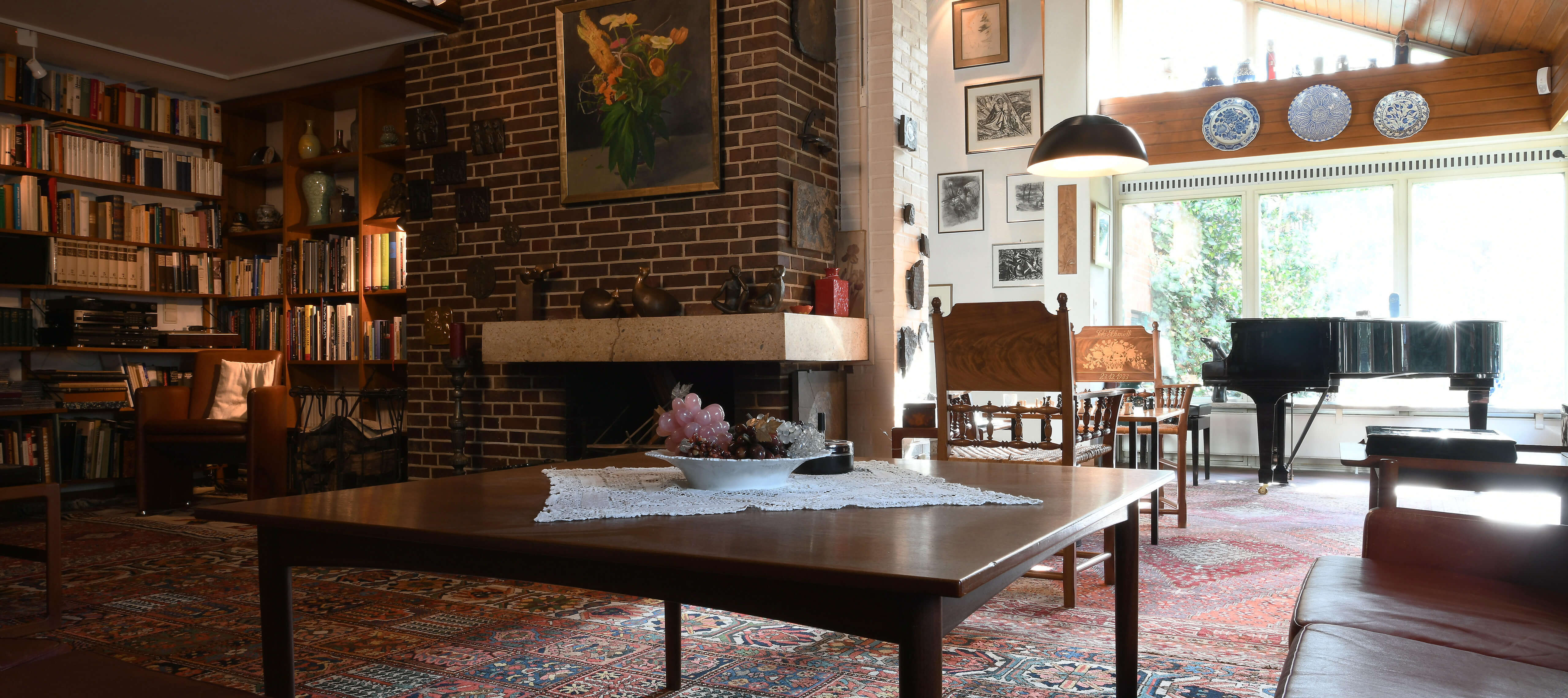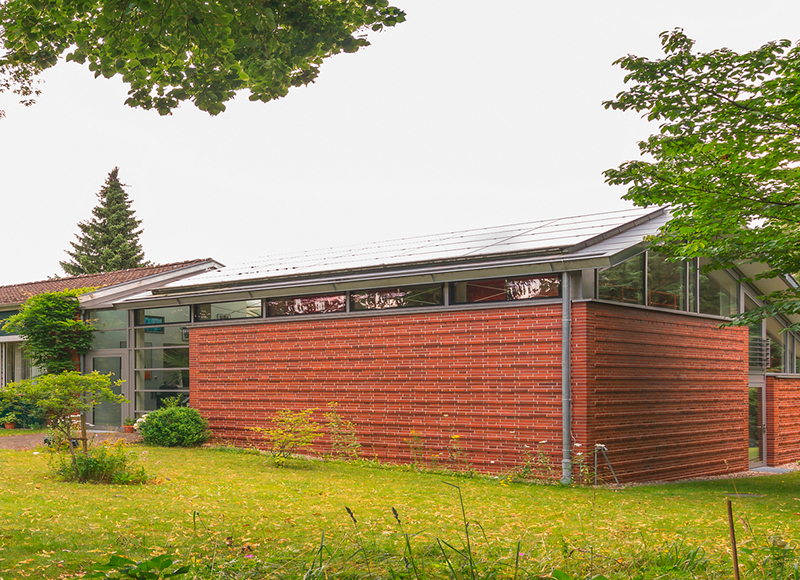The Schmidts’ house
Tours of the Schmidts’ home – virtually and as a book
Loki and Helmut Schmidt lived in Langenhorn, Hamburg for half a century. The Schmidts moved into the legendary terraced house at 80 Neubergerweg in 1961; it functioned as a kind of unofficial second seat of government, along with the Chancellor’s bungalow in Bonn. Schmidt’s friends, such as Giscard d’Estaing and Henry Kissinger, were guests here. The King of Spain, Juan Carlos, the Soviet head of state, Leonid Brezhnev, and the Polish head of government, Edward Gierek, all visited the quiet residential area on the edge of Hamburg.
For decades, Neubergerweg was also where the “Friday Society” met. Every second Friday of the month, for 30 years, the Schmidts invited people from all walks of life – including politicians, business people, artists, doctors and scientists – to a lecture and debating circle that discussed what was happening in the world.
Today, Loki and Helmut Schmidt’s former home is a place of contemporary history. While they were both still alive, Loki and Helmut Schmidt expressed the wish that their home should later be open to the public.
As tours are currently not possible due to the coronavirus pandemic, you can explore the house in a virtual tour here.
Additionally, the Bundeskanzler-Helmut-Schmidt-Stiftung has published a lavishly illustrated book, “Zuhause bei Loki und Helmut Schmidt” (“At home with Loki and Helmut Schmidt”) that invites the reader into the Schmidts’ home. The foundation’s aim with the book is to give anyone who is interested an opportunity to get to know the Chancellor’s terraced house in Langenhorn. “As chair of the board of trustees, it is a great pleasure to invite you, dear reader, on a journey through 60 years of contemporary German history,” writes Peer Steinbrück in his foreword. “Historical photographs, pictures by Hamburg photojournalist Michael Zapf, and texts by the foundation’s experts will give you unusual insights into the lives of this couple of the century.” The 224-page book is published by Edel Books.
“Zuhause bei Loki und Helmut Schmidt. Das Kanzlerhaus in Hamburg-Langenhorn”
Published by the Federal Chancellor Helmut Schmidt Foundation in association with Edel Books, September 2020
ISBN 978-3-8419-0746-2
€ 22.00
Helmut and Loki Schmidt had a fine appreciation of the arts that can be felt throughout the house. A grand piano that Helmut Schmidt himself regularly played is a testament to his love of music.
As admirers of Ernst Barlach, the couple regularly visited the art gallery named after the sculptor and graphic artist in Hamburg’s Jenischpark. In autumn 2020, the museum presented the first comprehensive insight into the couple’s private collection. The exhibition “Kanzlers Kunst” (“The Chancellor’s art”) comprised 150 works, including paintings, sculptures and decorative works from the Schmidts’ home. It was organised by the Ernst Barlach Haus in close cooperation with the Bundeskanzler-Helmut-Schmidt-Stiftung and the Helmut und Loki Schmidt-Stiftung.
It is no secret that the Schmidts were art enthusiasts. The fact they lived surrounded by works by such leading figures as Marc Chagall, Otto Dix, Karl Schmidt-Rottluff, Pablo Picasso, Emil Nolde, Käthe Kollwitz and Paula Modersohn-Becker frequently comes as a surprise, however. The Helmut und Loki Schmidt-Stiftung issued a book, also entitled “Kanzlers Kunst”, edited by the art historian Dr Friederike Weimar. In addition to reproductions of the artworks, it includes a series of essays illustrating the Schmidts’ relationship to art.
The 216-page book “Kanzlers Kunst” is published by Dölling und Galitz Verlag.
“Kanzlers Kunst. Die private Sammlung von Helmut und Loki Schmidt”
Published by the Helmut und Loki Schmidt-Stiftung in association with Dölling und Galitz Verlag, October 2020
ISBN 978-3-86218-134-6
€ 34.00
The archives next door – now a place of research
By 2006, the extensive collection of documents that Helmut Schmidt started to assemble directly after the war had already outgrown the Schmidts’ home. He therefore decided to have a new archive building built in the immediate neighbourhood. The archives are open to researchers and other interested parties.




